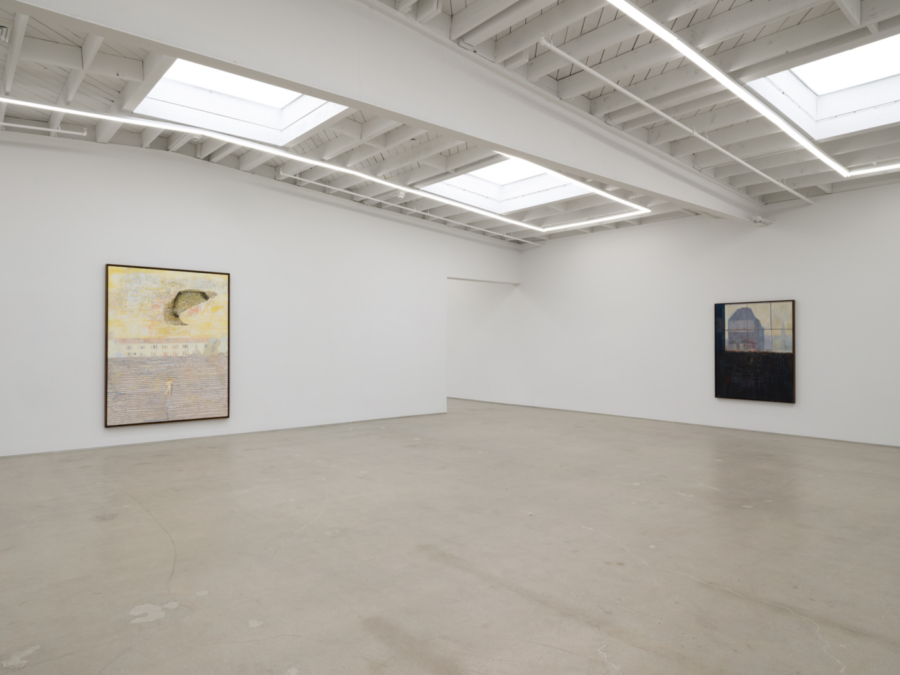August 12, 2024

View of One day this will be a long time ago, 2024. Left to right: The stairs (a dream), 2024, oil on canvas, 94⅝ × 71 in.; and Voltaire and Rousseau, 2024, acrylic on canvas, 67 × 51 in.
Remembering his art school years in an interview with Peter Doig, Andrew Cranston recalls that “there was a sort of way in which you could be insulted–and it was kind of if your work was illustrative or decorative or narrative.” “The trinity of horror,” Doig offers, to which Cranston replies: “Aye, and I was interested in all three of them!” That was in Aberdeen in the early 90s, and ever since then Cranston has been whittling away in the same “anything-goes” pursuit of these Nabi ideals. Three decades on, what remains of that initial frisson?
Paint itself, of course, and the exquisite craft of its arrangement, out of which Cranston squeezes ever-renewing wonder. In Los Angeles, absent any trace of taboo, we receive twenty-five new canvases from Glasgow, and here their subtle mysteries dazzle in a new light. Three airy, sunlight-drenched rooms at Karma in West Hollywood give abundant space for new orchestrations of color and new knots in Cranston’s sprawling webs of interlinked personal and collective memory.
The orange-on-orange pianists of When we were two little boys (all works 2024 unless otherwise noted) wriggle only slowly out of hiding, after our eyes have had time to adjust to the longest-wave extremes of the visible light spectrum. This device serves a dual purpose: it deftly dilates the temporal unfolding of the experience of painting, even as it nods toward Pierre Bonnard, whose wife Marthe often camouflaged herself similarly in his canvases, such as Dining Room on the Garden (1935). And the twinkling pastels of the same painting’s carpet constitute a citation, too, this time to the op-inflected “Zobop” installations of Cranston’s contemporary and fellow Scotsman Jim Lambie.
These echoes quietly charge the space around every corner: The House of the Famous Poet echoes a theme from Édouard Vuillard, another intimiste Cranston holds dear, who painted the home of Mallarmé at Valvins; but the new painting’s title also happens to be shared with a story by Scottish writer Muriel Spark.
Laced with double readings that straddle the border between public and private, Cranston’s paintings slowly refocus to reveal an interlocking substructure in gentle tension with their almost whimsical technicolor flair. By turns literary, painterly, and personal, this referential network seems to flicker as it’s traced through the gallery, link by link and glimpse by glimpse.



